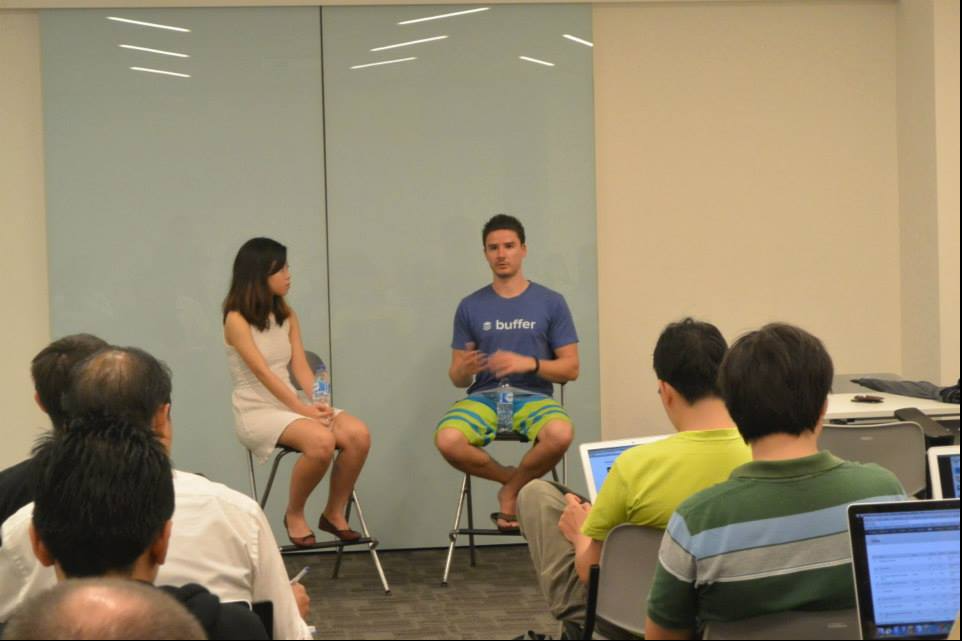Joel Gascoigne is an American entrepreneur as well as a businessman. His love for technology has earned him a name in the world of entrepreneurship. He is the founder and CEO of Buffer, a site that automatically helps people schedule and posts their content on social media platforms.
Joel Gascoigne enjoyed sharing his content on social media. Twitter was his favorite place, But when you’re a social influencer or want to become one, you need to post pictures or some words frequently and be consistent. It was very hard to implement that rule. He will go even three days without posting any tweet. That’s where Buffer comes in. It helps in scheduling your Facebook and Twitter posts, and then it makes sure there is total engagement with your fans.
Joel Gascoigne and his team have managed to create both IOS and Android apps to accelerate the process of posting. You can also schedule your LinkedIn posts to get more connections and stay updated with the trending job vacancies. But in every business, there are ups and downs, which can either discourage or make you stronger.
I had used Twitter for almost one and a half years. It was my best platform to share my quotes and blogs everyday. Most of my followers appreciated what I was doing. Some of them commented with other emotional stories, and I felt like I was helping someone. There are moments I would end up having the best conversation with my followers, and it felt good. But the problem was the idea of tweeting every day. I was doing many things, and at times, I would find myself going for days without posting any tweet.
My content was on-demand, and some people’s stories triggered something strange. I felt the true meaning of life from their response. I thank the developers of social media applications, where people share and solve problems with strangers. According to research, people will opt to open up to strangers more than others.
The process of sharing posts and blogs manually was tiresome. I realized how it would be more difficult as days went by because I had to handle many things. So, I hired some tweeter clients to do the job for me. The problem was choosing the right time to post all my content. Sometimes, the hired person could also delay with some hours before posting the content. There was a time I directed him to post the content five times a day, but he did it twice only. That was disgusting. It was hard to find a reliable person.
I used notepad to keep track of the articles I had written to decide which one to post at a specific time. However, it was still cumbersome, and that’s where the idea of Buffer was born. When you are undergoing a certain challenge, it becomes a problem. Then if you identify a problem in society, you try to implement a solution that will help more people.
So, I paused for a while and rescheduled everything. I hired more people to write blogs and quotes for my platform. At this moment, all my concentration was on the new startup. Young companies have always failed during the pre-seed season. In the software development journey, there is something called validation and verification. The product must pass through acceptance testing before the launching process. Then, you must share with the final user what you are building so that they can verify or dismiss some functionalities. So, in my part, I assumed what clients needed.
One of my inspirations was the Lean Startup methodology blog owned by Eric Ries. It was really interesting reading all the materials and instructions on implementing a startup from scratch. I combined my mistakes from my first startup with Eric’s idea, and then I took all the energy to the Buffer app. The best way to approach the problem was to include the clients and stakeholders to find insights before completing the project.
It was a nice approach for sure, and I liked it. I started by creating two-page well-designed websites to act as a blueprint of what the users will see. I took it to various clients for almost one week, and the response was positive. Some users provided more functionalities that I should automate on the site. It was very helpful. To all entrepreneurs, coming up with something that acts as a blueprint to test is the first step to gauge whether the product is legit.
The best part was when I shared the site with my tweeter followers. I didn’t have huge numbers, but the 1700 followers were very excited about my idea. Few followers signed up, and I felt the product would be real. Immediately an individual signs up, they receive a direct email to provide feedback about the site. I had a team of skilled developers ready to make any changes requested by clients. I tracked all the metrics and traffic, and the conversation was awesome.
ALSO READ:
- Alex Furmansky, Founder And Ceo Of The Budsies Company
- With No Employees, Adam Callinan, CEO and Founder BottleKeeper Transforming Startup to 8-Figure Revenue
- “How I Missed An Investor On Shark Tank” Tod Miller, Founder & CEO at Body Walking Institute
Of course, when you develop a product, not everyone will like it. Several people, dint know how it operates. Others said they would not use it, but many followers promised to be the first users. The second test I did was to ask people if they could pay for the product and at which price. That’s where I decided to add a payment page that had different payment methods. Some responses were very harsh. However, I was lucky to get several people willing to pay for this. It was the right time to go and build the whole product.

At this time, I was living in the UK with my co-founder Leo. We decided that was the first location to make our application work. Although I was not skilled, I opted to learn some web development from my experienced team. I learned to build chrome extensions within the first year. We did not have an Android or IOS applications expert, so the web was the first solution.
In seven weeks, I launched the Buffer app. The app only supported posts on Twitter and Facebook, and we had plans to improve to other social media platforms in the coming years. To all the young founders, before launching a product, don’t be overwhelmed with the need to implement everything. You can cut down some costs and res=duce some functionalities at first. Remember, even Facebook did not start with all those 100 pages they have now. Use the funds you have to support where you can.
Immediately I launched Buffer, and I became a web developer. After that, I started working as a freelancer on different platforms as side hustles. It wasn’t easy to balance between my company and the online jobs. I did not allow y body to rest because I could only sleep for 4 hours without a weekend to rest. But the fact that I had put on the market my app with minimal functionality was okay.
However, I wouldn’t say I liked that I was working for people during the day and saving only a few minutes for the Buffer application. So, I decided for a whole month to reverse the gears and focus more on Buffer. Every day, I could wake up at 6:00 am to write some code and marketing for 90 minutes. It worked wonders because that is the time when you are more productive.
For young entrepreneurs, if you want to succeed in your product, you need to question priorities. Building your product will give long-term results than working for people. That’s what made me shift to buffer in the morning hours.
Criticism can discourage you or even shun your company. But talking to users has always been my daily activity. I like interacting with someone who sees the better part of my product rather than criticizing it. We have set aside 25 % of resources for the customer care service because I believe that’s the best decision. Every month, we get a report about what we should change or implement.
I am glad to say that users are above 1 million. And I have vowed to provide the best service that my clients demand. We are adding too many features and coming up with new ideas. Sometimes we implement a feature. If it gets negative reviews, we pull down. Our engineers are always ready to fix anything like a site crushing. As an entrepreneur, you must be ready for the worst case, despite your business.
To young Joel Gascoigne, start looking for verification and validation if you want to be a founder. Never jump that step. It’s crucial for your future decision. Then, know the right time to transition from a side project to full-time working on your startup. Something that might work for me maybe won’t work on your side. Life is sometimes through trial and error; the more you get into it, the more you become knowledge you digest.
































































Comment Template